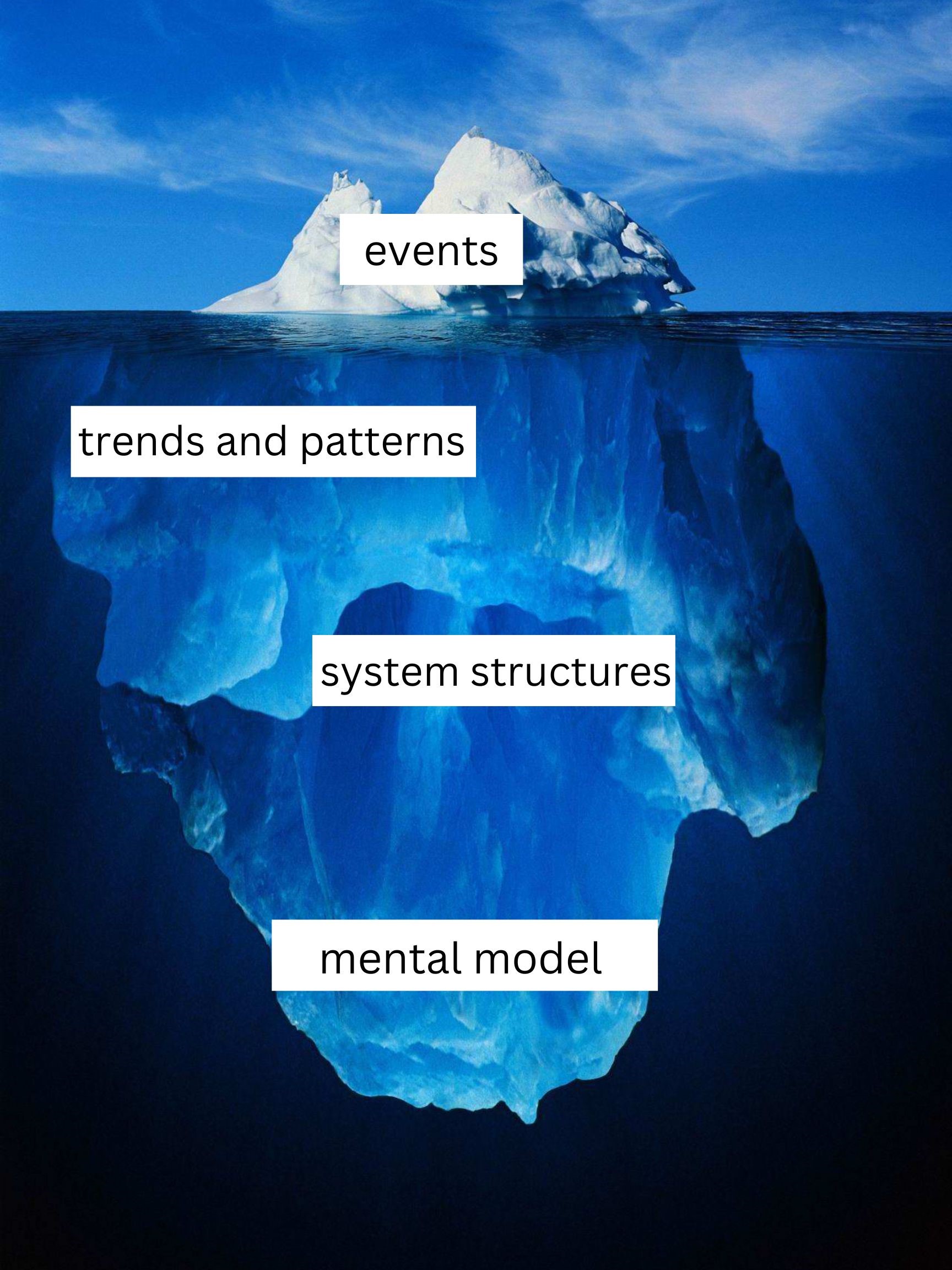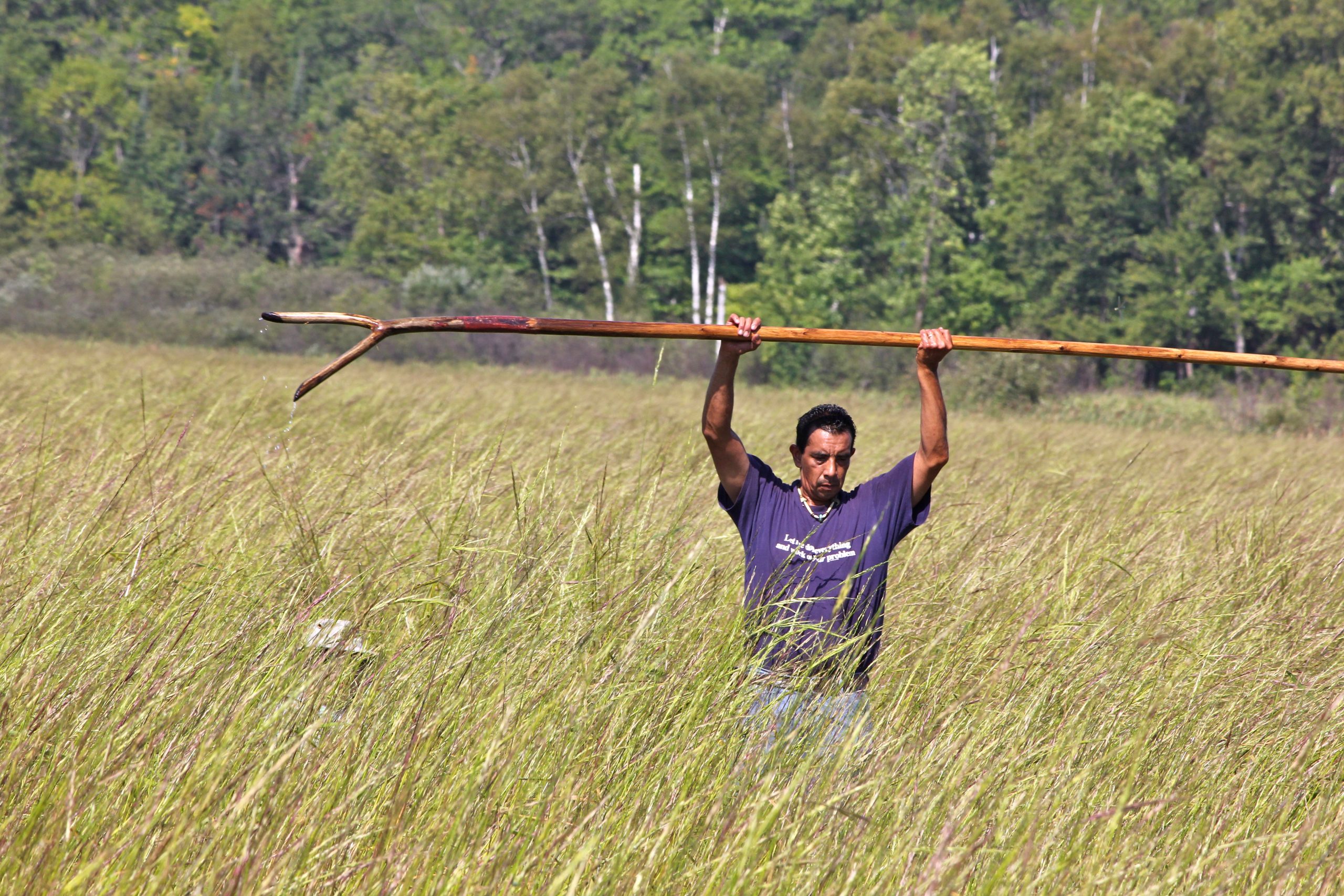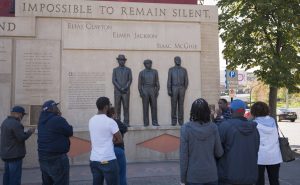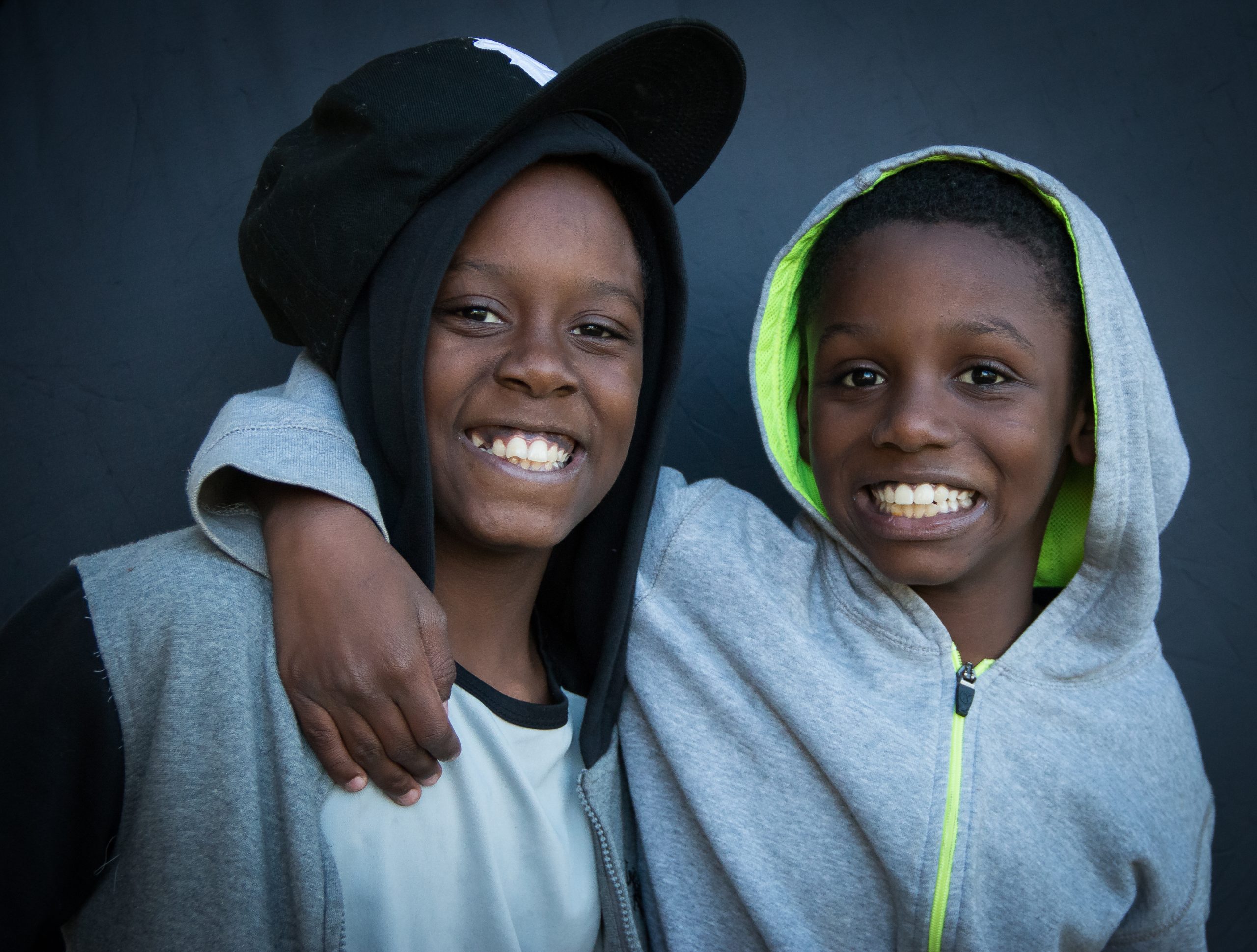13 Community Data Sources
“How can you tell our story if you don’t know it? Who do you really think that we are, when you can only tell the story of our deficits and not our assets? When you can only seek to fix us rather than build with us?”
Clarification through the use of Data
The second stage of the systems thinking community change process includes clarifying the current reality at all levels of the ‘iceberg.’ Before you begin this process, however, it is critical to remember that the current reality needs to be viewed through multiple lenses. This means identifying various experiences of the current reality—including seeing strengths.

This can be accomplished in a few different steps using various types of data while applying systemic thinking as shown in the iceberg graphic. Applying systemic thinking is accomplished in several steps and uses multiple types of data. See the iceberg graphic (figure 13.1) as an analogy. Remember, our goal is to examine the current reality by examining four levels of information:
- Events. Evidence of the community situation is often identified in visceral experiences, events or things we witness in our lives and jobs:
- children in crisis who cannot get help
- rise in mutual aid to address basic needs
- seeing people without a home
- experiencing or witnessing violence
- Trends and Patterns. Evidence that demonstrates a problem that has existed for a period of time is shown through trends and patterns. This is often identified through secondary data:
- public health data
- agency program and service data
- case notes
- System Structures. A problem is usually perpetuated by policies and power dynamics of the structural systems. These are typically identified through:
- data analysis
- interviews with key stakeholders
- focus groups
- Mental Model Maps. At the very root of a problem are underlying assumptions, mental models or mindsets that contribute to the perpetuation of a problem or issue. These are typically identified through:
- interviews with key stakeholders
- focus groups
It works well to begin the assessment stage by considering what type of evidence from the above list you currently have access to in order to answer the more complex systemic questions about the causes of the current reality. Then, identify which data you need to collect to continue your analysis and get to deeper levels of understanding. To do this, changemakers need to access different types of data—which I describe as secondary data and primary data.
Changemakers often begin with reviewing secondary data, getting as close to the level of community being focused on, analyzing this data, and then supplementing with primary data—which is most often collected next in the process. Together, these sets of data should paint a clearer picture of the strengths and assets of the community, the need for change, the causes of the change, and the mindsets that contribute to the perpetuation or resolution of the problem being examined.
- De Sio, H.F. (2021). Changemaker playbook: The new physics of leadership in a world of explosive change. Boston: Nicholas Brealey Publishing. (pg. 91) ↵
Necessity of Acknowledging Context
This is a book on community and organizational change, so knowing and acknowledging the context of my work feels important and relevant. So much of the context for community work includes tragic history and the strengths and resilience of the people who have survived unthinkable intentional acts at the hands of oppressors who abused their power often for hundreds of years. It is baked into the fabric of our communities and incorporated into the DNA of our children. My community is no exception, so it needs to be acknowledged. If ignored, because it is too hard to hear, then expect to be less effective in your work. Period.
As I am a settler in the region where I live and work, there are a few critical place-based and people-based acknowledgments that I need to make in order to provide some context for this text.
My Community

These images reflect the beauty of the community that I call 'home.' It is rich with stories, recent and past, and filled with people who are active in creating the community that they want to live in—one in which they feel welcomed and able to thrive and lead.
Region as Home to the Anishinaabe
I am writing this book from the shores of Lake Superior, in a region that is the current home to the Anishinaabe people[1]. Specifically, we are located in the treaty-ceded territory of the 11 Ojibwe Tribes of Minnesota and Wisconsin. As identified in the treaties, particularly from 1854, the Nations ceded the land in northern Michigan, Wisconsin, and Minnesota, but retained the rights to hunt, fish, and gather in the ceded territories[2]. This agreement must be honored and remains critical to health and healing.

This knowledge is critical for any of us who work or live in the Upper Midwest, as it helps us to understand the life-giving Manoomin (wild rice); the enormous cost of the tragedy of the Sandy Lake Massacre, and the horrifying actions preceding the massacre; the legacy of the boarding school era on families and communities; the reality of missing and murdered Indigenous people; the necessity of food sovereignty; the ingenuity of culturally-relevant human service strategies; the importance of language revitalization as empowerment and resilience, and so much more.
Region as Site of Community Violence
I am also writing this book from a community that engaged in an incident of lynching during the Jim Crow era of three African American men over 100 years ago[3]. A mob of 6-10,000 people came together in a matter of hours to murder three African American men who were in Duluth, Minnesota with a traveling circus. Clearly, the circumstances of hate and tension already existed when the men were wrongly accused of raping a white woman was made. Just think....the mob was gathered primarily by word-of-mouth as people drove around the city exclaiming that they needed to take justice into their own hands.

Often people are very surprised to know that this occurred in such a Northern state, far from the Jim Crow South. This is a part of the myth of the progressive North.
So. . . what is the history of your community that shapes the context for your work?
My Help and Inspiration
In addition, I want to recognize some of the people who have individually assisted or inspired my work. This includes former social work students like Vanessa Sowl, who read through this text and provided critical honest feedback; my amazing niece, Kate, who worked most closely with me to edit the entire text; Jax Kobielus, the technically talented and very kind copy editor at UW-Superior who edited and polished the entire draft; my closest friends—Emily, Patty, Shari, Dana, Sandra, Erik, Kevin— who were endlessly encouraging; more friends, community organizers and mentors like Carl Crawford, LeAnn Littlewolf, Nevada Littlewolf, Ivy Vainio, Treasure Jenkins, Emma Carroll, Henry Banks, Steve O'Neil, Erik Peterson, Denny Falk and many more who I have learned from and been challenged by in necessary ways over the years; amazing coworkers at UW-Superior (Mimi, Mandy, Cherie, Haji, T, Laurel, Kennedy, Salisa, Stephanie, Emily, Travis, Del, Rachel, Ina...), all the amazing changemakers at Ashoka who I recently became connected with and of course my family—Mom (Kathy), Brother (Richard), Eric, Ian, Cy, and Cal. It wasn't important that they understood what I was working on, but I did need the encouragement and space for me to do my 'thing.'
Finally, I am inspired by the youth! All change-making efforts should keep youth at the center of our work. We have an opportunity and responsibility to shape the world in which they can be their authentic selves and live out the dreams they have for themselves and their families.

"We are all going through a significant period of evolution, and it means that there's an opportunity in that, it feels burdensome right now, because so much has been taken from us. But there's such an incredible opportunity, to decide how you want to show up in the new world.
Because it will be a new world. And my greatest hope is that we don't reach for normal, that we reach for better."
-Michelle Norris, Michelle Obama Podcast - August 2020
One of the intentions of this part of the textbook is to present opportunities for YOU to participate in and lead organizational change efforts, even as a new member of an organization. My hope is to provide inspiration and tools that are available to you immediately upon your entry into your chosen profession—whether as an intern or employee.
So, I have chosen to begin this last chapter with a return to how I began this book: a call for 'better' rather than 'normal.'
YOU are an important part of this challenge because you will enter your profession with hope, vision, innovative ideas, talents, and observations that are all needed.
Consider that you will be entering your profession likely on the periphery of an organization—on the edge or frontline versus the center of the organization. The periphery is an important place for change strategies partly because those in the periphery are likely to be less connected to influences that may counter or resist change efforts. [4]
Please consider these opportunities from the periphery:
- YOU have the opportunity to make fresh, meaningful observations of your new work environment. Observe the system and attempt to characterize the organizational culture, particularly aspects that seem healthy and those that seem harmful. Observe how you enter the culture and adopt the organizational norms.
- YOU should ask questions and listen. Your initial judgments or observations about the organization may be spot-on and worthy of criticism and they may uncover complex reasons that require in-depth understanding.
- YOU have the opportunity to volunteer to participate on teams or committees related to projects you are intrigued with. The team or committee should have some institutional power behind their work (budget, outcomes, etc.) so that their work isn't just to check a box but to innovate and support change.
- YOU can find and connect with like-minded coworkers. Use your connections to build your network of people who share your vision and ideas for change. Get to know other people. Listen to their ideas.
- YOU can suggest tools and resources. You likely learned about new resources and tools during your academic studies that were not part of your new coworker or supervisor's education. Suggesting these tools and resources may be a palatable way to share your knowledge in a way that is heard, less as criticism and more as sharing.
- YOU can offer to do some of the work. For trainings, perhaps you offer to research trainers who would be available. Perhaps you offer to look for materials for a work-sponsored discussion group and suggest a book, podcast, or TED Talk.
YOU have power and YOU have the opportunity to move our communities and organizations toward a better place. Consider this. Ponder this. Go forth.
"We are all going through a significant period of evolution, and it means that there's an opportunity in that, it feels burdensome right now, because so much has been taken from us. But there's such an incredible opportunity, to decide how you want to show up in the new world.
Because it will be a new world. And my greatest hope is that we don't reach for normal, that we reach for better."
-Michelle Norris, Michelle Obama Podcast - August 2020
YOU are needed to help us 'Reach for Better'
One of the intentions of this part of the textbook is to present opportunities for YOU to participate in and lead organizational change efforts, even as a new member of an organization. My hope is to provide inspiration and tools that are available to you immediately upon your entry into your chosen profession—whether as an intern or employee.
So, I have chosen to begin this last chapter with a return to how I began this book: a call for 'better' rather than 'normal.'
YOU are an important part of this challenge because you will enter your profession with hope, vision, innovative ideas, talents, and observations that are all needed.
Consider that you will be entering your profession likely on the periphery of an organization—on the edge or frontline versus the center of the organization. The periphery is an important place for change strategies partly because those in the periphery are likely to be less connected to influences that may counter or resist change efforts. [5]
Please consider these opportunities from the periphery:
- YOU have the opportunity to make fresh, meaningful observations of your new work environment. Observe the system and attempt to characterize the organizational culture, particularly aspects that seem healthy and those that seem harmful. Observe how you enter the culture and adopt the organizational norms.
- YOU should ask questions and listen. Your initial judgments or observations about the organization may be spot-on and worthy of criticism and they may uncover complex reasons that require in-depth understanding.
- YOU have the opportunity to volunteer to participate on teams or committees related to projects you are intrigued with. The team or committee should have some institutional power behind their work (budget, outcomes, etc.) so that their work isn't just to check a box but to innovate and support change.
- YOU can find and connect with like-minded coworkers. Use your connections to build your network of people who share your vision and ideas for change. Get to know other people. Listen to their ideas.
- YOU can suggest tools and resources. You likely learned about new resources and tools during your academic studies that were not part of your new coworker or supervisor's education. Suggesting these tools and resources may be a palatable way to share your knowledge in a way that is heard, less as criticism and more as sharing.
- YOU can offer to do some of the work. For trainings, perhaps you offer to research trainers who would be available. Perhaps you offer to look for materials for a work-sponsored discussion group and suggest a book, podcast, or TED Talk.
YOU have power and YOU have the opportunity to move our communities and organizations toward a better place. Consider this. Ponder this. Go forth.

